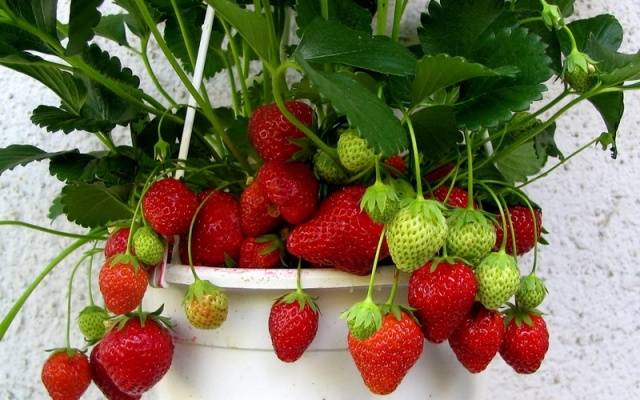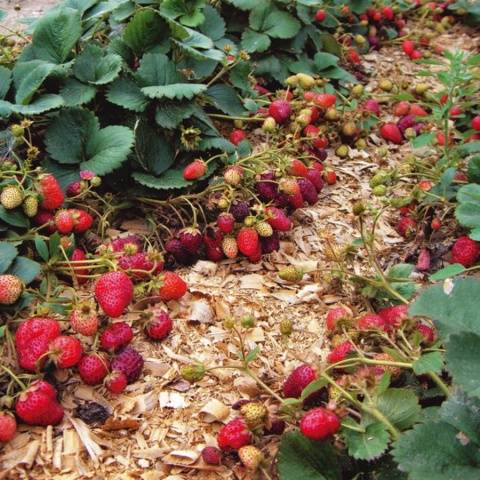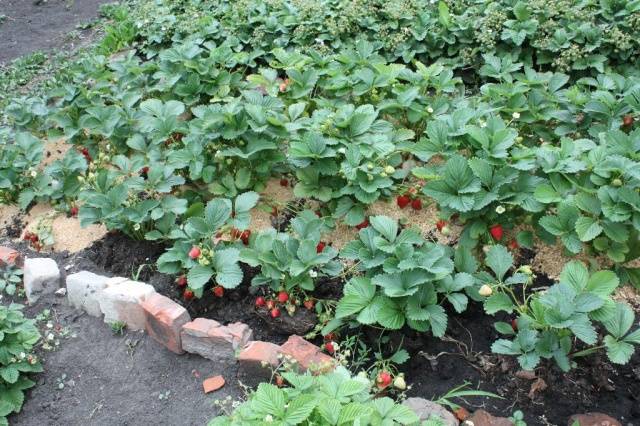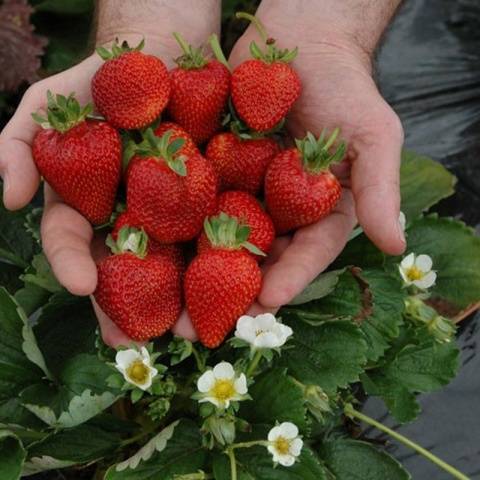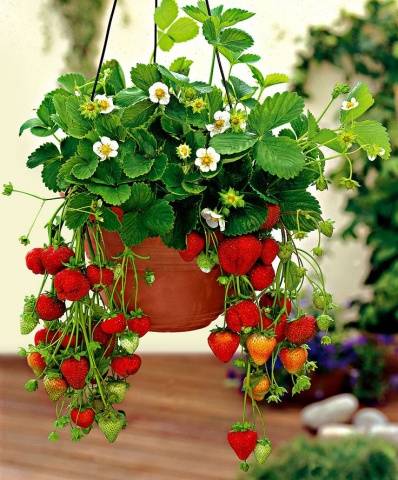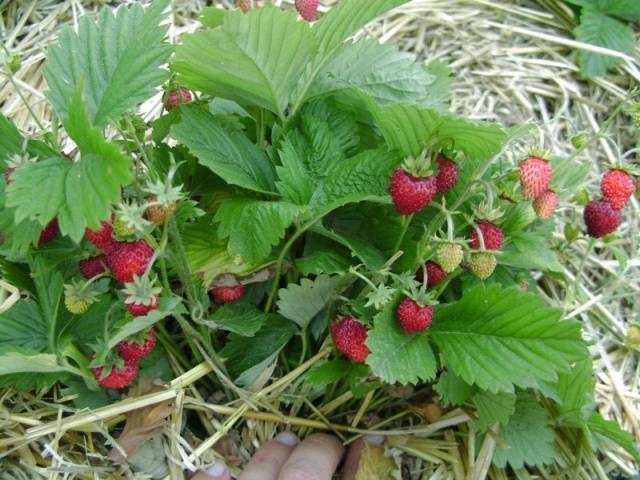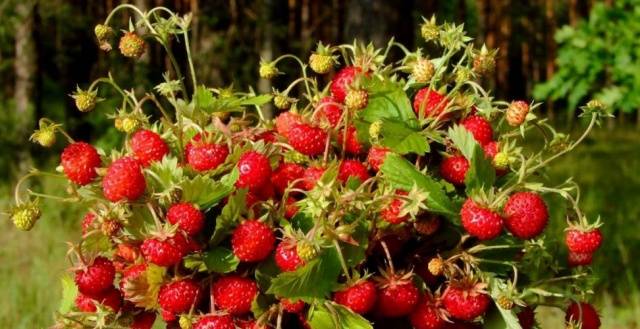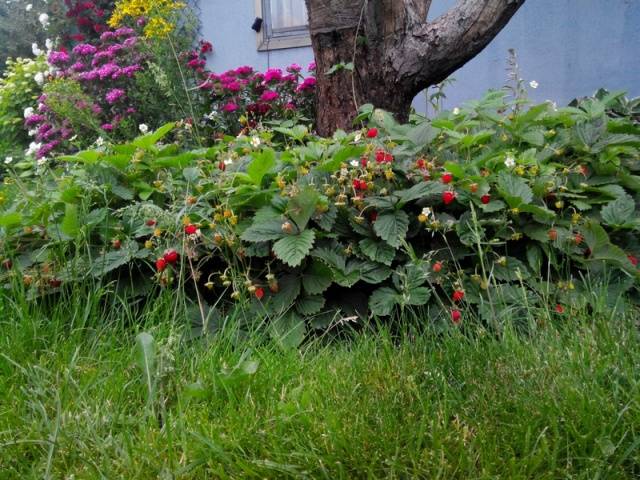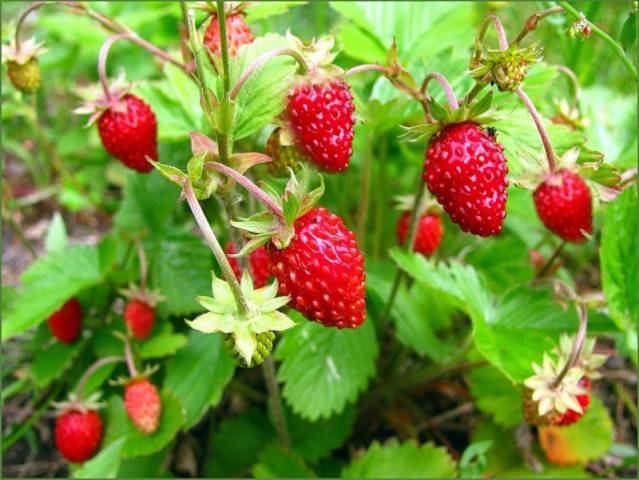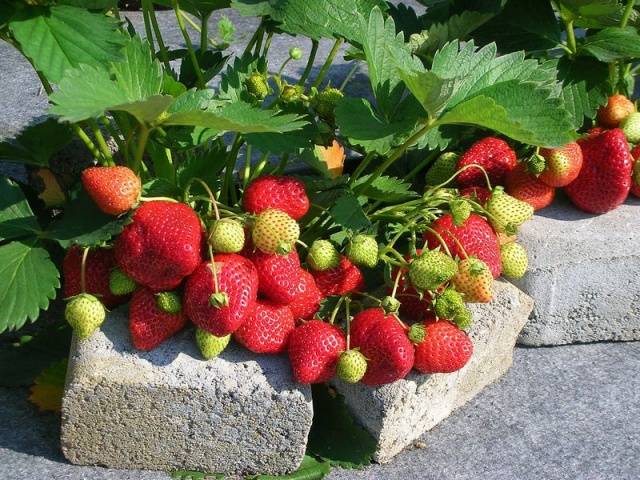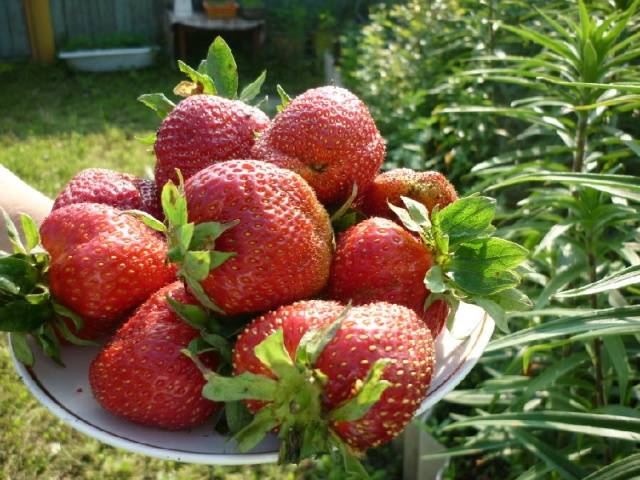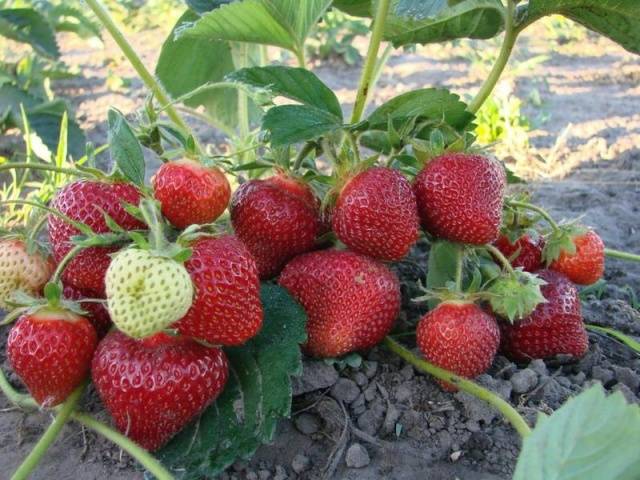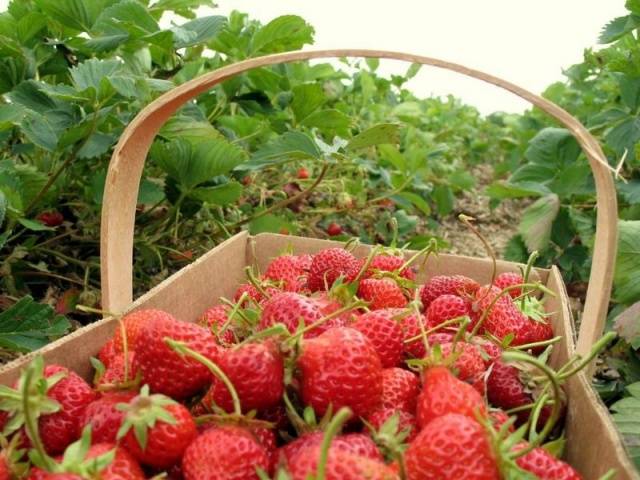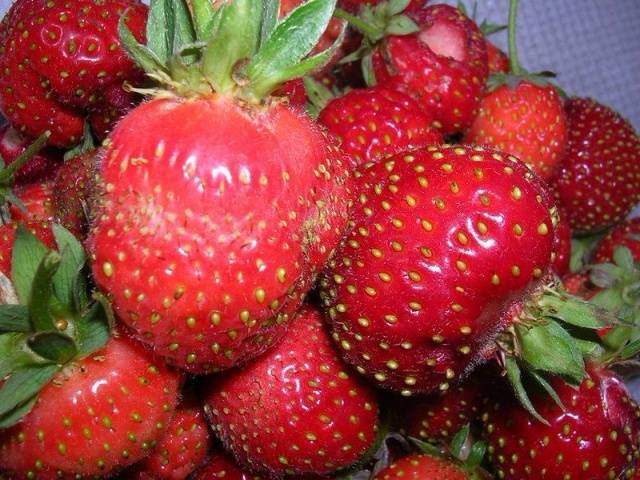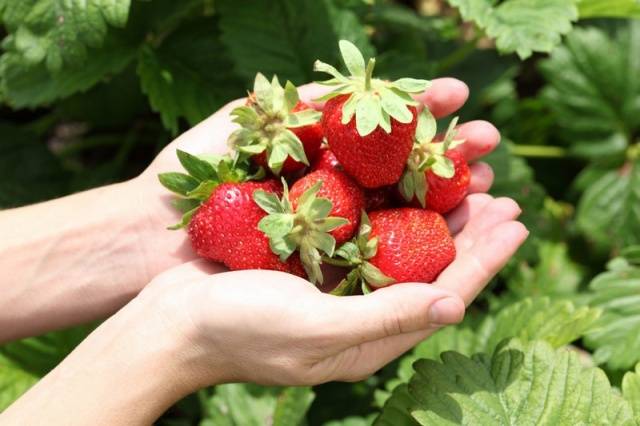Content
Repairing strawberries today are distinguished by a wide variety of varieties, although they began to grow this type of berry relatively recently. The popularity of remontant varieties is based on their yield, the berries of such strawberries sweet and delicious - in no way inferior to ordinary garden varieties.
And yet, there are some peculiarities of growing remontant berries. What are they and what remontant strawberry varieties are considered the best, you can find out from this article.
Features of growing remontant varieties
Repair strawberry characterized by long and extended fruiting. So, if ordinary varieties of strawberries and strawberries bear fruit only once a year, then remontant varieties can produce a crop either constantly, throughout the summer season, or give all the berries in two or three doses.
It is clear that such a fruiting pattern greatly depletes strawberry bushes. To get a good harvest in your home garden, you should adhere to some rules for growing remontant varieties:
- New varieties of strawberries remontant is almost as diverse as the common garden varieties of this berry. The main division is carried out in accordance with the size of the berries: large strawberries can reach a weight of 100 grams, the mass of small-fruited ones is only 5-10 grams, but they are sweeter and more fruitful.
- So that the plants are less depleted, and the berries do not shrink after the first harvest, it is necessary to regularly feed the strawberries with complex fertilizers and plant them only in fertile soil.
- Watering is also very important for remontant strawberries: the bushes are regularly and abundantly watered, and the ground between them is periodically loosened. To prevent the soil from drying out and retain moisture, it is recommended to mulch the strawberries with foil, hay, sawdust or humus.
- Early varieties of remontant strawberries begin to bear fruit as early as May, the second harvest wave - in July, if autumn is warm, there will also be a third berry picking - in September. Of course, being able to enjoy sweet berries almost all season is great. But such fruiting greatly depletes the bushes, large berries are quickly replaced by small ones, the harvest gradually decreases. To avoid exhaustion, experienced gardeners recommend removing flowers that appear in spring and collecting only one, but abundant, harvest of sweet and large strawberries.
- Scheme growing remontant strawberries practically does not differ from the method of planting ordinary varieties: in spring or autumn, the bushes are planted in the ground or in a greenhouse. The gardener must remember that the earlier in the fall he plants young bushes, the more chances they have to endure the winter well. For greenhouse varieties of remontant strawberries, the planting scheme does not matter at all, because its fruiting does not depend on the length of daylight hours. The only thing gardeners advise in such cases is to remove the first shoots with flowers (peduncles) so as not to weaken the bush and give it time to adapt.
- Reviews of experienced gardeners indicate that larger and sweeter berries appear on those bushes that give a mustache and multiply by them.Seed-propagated strawberries are called bezus, their fruits are smaller, but appear throughout the season, and taste like strawberries.
- In late autumn, before the onset of real frosts, it is recommended to trim the bushes of remontant strawberries, remove all whiskers and leaves. After that, the strawberries are covered with spruce branches, hay, dry leaves or sawdust.
To grow remontant strawberries, you do not need special experience or extensive knowledge in agricultural technology: all that is needed for such varieties is watering, abundant feeding, protection from diseases and pests.
Repairing strawberry varieties
It is quite difficult to determine the best varieties of remontant strawberries: each of them has its own pros and cons, distinctive features and characteristics. As in ordinary garden strawberries, in remontant varieties, division occurs according to several criteria:
- strawberry varieties for greenhouses or for open ground;
- remontant strawberries with pink or red fruits, or a berry of an unusual shade, a bizarre shape (even varieties with purple strawberries are known, or berries that taste like pineapple);
- early maturing, medium or late gradethat begin their fruiting at different times (from May to July);
- plants that bear fruit all summer or yield a crop in two to three times (depending on the type of daylight hours);
- large-fruited variety or strawberry with small, but numerous and sweet berries;
- a berry suitable for transportation and canning, or that strawberry that is good only fresh;
- resistant varieties that can withstand cold, heat, pests and diseases, or a capricious rare variety that requires constant attention.
Mushroom repair strawberry
Such varieties of strawberries are often called strawberries, since the berries are very reminiscent of forest berries: small, fragrant, deep red, very sweet. Fruiting of mustacheless varieties is stretched out for the entire summer period: there will always be red berries on the bushes, strawberries that have not yet ripened and inflorescences for the future harvest.
Small-fruited strawberries do not have whiskers, that is, processes that can take root. Therefore, its reproduction is possible only by the seed method - the gardener will have to buy or grow strawberry seedlings on his own.
Ali Baba
This variety has low (about 15-20 cm) spreading bushes with powerful shoots and large leaves. Berries of remontant strawberries are small - only 3-5 grams each, painted bright red, have white flesh with a strong aroma of wild strawberries.
There are many fruits and inflorescences on the bushes, strawberries are cone-shaped. Honeycomb is distinguished because of its high yield, increased resistance to diseases and pests, and the ability to withstand severe frosts and intense heat.
"Alexandri"
The repairing strawberry of this variety pleases not only with delicious fruits, but also with a decorative type of bushes. It is quite possible to decorate flower beds, balconies and terraces with such compact plants with beautiful carved leaves and small fragrant flowers.
The plant is unpretentious and productive enough. The strawberries are small - only 7 grams each, but very sweet and aromatic.
"Forest Fairy Tale"
Bushes are compact, of medium height, with many peduncles throughout the season.
The berries are scarlet, cone-shaped, and their flesh is white. Strawberries taste sweet and sour, very aromatic. Each fruit weighs approximately 5 grams. By the end of the season, the berries become noticeably smaller, lose their taste. The yield of the variety is high.
"Ruyana"
An early ripe remontant strawberry, a photo of which can be seen below. The first fruits ripen two weeks earlier than other varieties - around mid-May.
Strawberries are relatively large (as for a group of small-fruited varieties), red, with sweet pulp. You can recognize "Ruyanu" by its strong forest aroma.
This strawberry has a lot of advantages: early ripening, abundant fruiting throughout the summer, resistance to diseases and viruses, frost resistance, high yield.
"Rugen"
Dessert type of remontant small-fruited strawberry. Ripening in this variety is also earlier - about a week earlier, inflorescences and the first ripe berries appear on the bushes.
The strawberries are small, bright red, their flesh is slightly yellowish, and the taste is very rich, sweet, reminiscent of strawberries from a forest lawn.
"Baron Solemacher"
The berries of this kind of remontant strawberry can be recognized by their scarlet shade and convex seed-seeds. Fruits are round, small - up to four grams. Their taste is excellent, sweet, without sourness.
The characteristic feature of this strawberry is its resistance to diseases and pests.
Large-fruited remontant strawberry
These varieties are easy to distinguish by the appearance and size of the berries - the weight of each strawberry is from 30 to 70 grams. This group also includes varieties with giant fruits - each strawberry on a bush can weigh about 100 grams.
It is clear that with such sizes of fruits, the varieties will be quite fruitful, because with proper care, more than a kilogram of ripe berries can be harvested from one bush.
This variety also differs from the previous group of small-fruited varieties in the type of fruiting: strawberries do not ripen all season, but bear fruit only two or three times (depending on the climate in the region).
The grower can easily control the fruiting of large-fruited remontant strawberries: in order to harvest a good harvest of high-quality and large berries, it is necessary to remove the spring inflorescences and sacrifice the first harvest.
The depletion of large-fruited varieties of remontant strawberries, even with good care, occurs very quickly - after 2-3 years... For a good harvest and large berries, it is recommended to replace old bushes with new ones as often as possible.
Large-fruited remontant strawberries reproduce, usually with a mustache. Rooting them is quite simple, you just need to remove all shoots, except for the first two or three whiskers. For reproduction, the strongest mother bushes are chosen, on the rest of the plants the whiskers are removed so as not to weaken them even more.
"Queen Elizabeth II"
This variety is quite common in Russia, because such strawberries can be used to plant trees and to ennoble hilly terrain. The bushes of this variety are very powerful, tall and spreading, but there are few leaves on them.
But the berries are large (70-125 grams), scarlet, aromatic and very tasty. But you can't feast on such strawberries for long - the bushes must be renewed every year.
Review of the variety "Queen Elizabeth II"
"Temptation"
Hybrid dutch strawberry, the berries of which have an unusual flavor of nutmeg. The mass of the fruits is not very large - only 30 grams, but there are many such strawberries on each bush, they are fragrant and very juicy, although they have dense flesh.
The bushes are so decorative that they are often planted in pots and tubs, used in flower beds and flower beds.
"Temptation" can bear fruit from May until the first autumn frosts. If winter comes early, the inflorescences and ovaries of the last wave must be removed.
"Diamond"
This variety was bred by American breeders. Berries of medium size (about 20 grams), colored in a light shade of red, tasty and aromatic.
The bushes form a lot of whiskers, so there will be no problems with the propagation of strawberries. The variety staunchly resists diseases, surprises with its immunity to attacks by spider mites and other insect pests.
"Moscow delicacy"
And here is one of the domestic large-fruited varieties of remontant strawberries. The bushes of these plants are tall, powerful, well-branched. There are a lot of fruits on the bushes, and they are quite large - 13-35 grams.
The taste and aroma of strawberries are reminiscent of sweet cherries. The fruit is smooth and even and is often sold for sale.
The variety resists diseases well, is able to endure severe frosts without shelter.
Monterey
This remontant strawberry is also from the USA. Bushes are powerful and strong, well leafy, dotted with inflorescences.
The berries are large - the average weight is 30 grams. Colored red, have a rich taste, pleasant aroma, juicy pulp. The variety is characterized by an increased yield.
Outcomes
Repaired varieties require more close attention of the gardener and more care, but the yield of such strawberries is much higher, and you can feast on fresh berries in any month of the warm season.
Only the best varieties should be chosen for planting on your site, with photos and descriptions of which can be found in this article.
